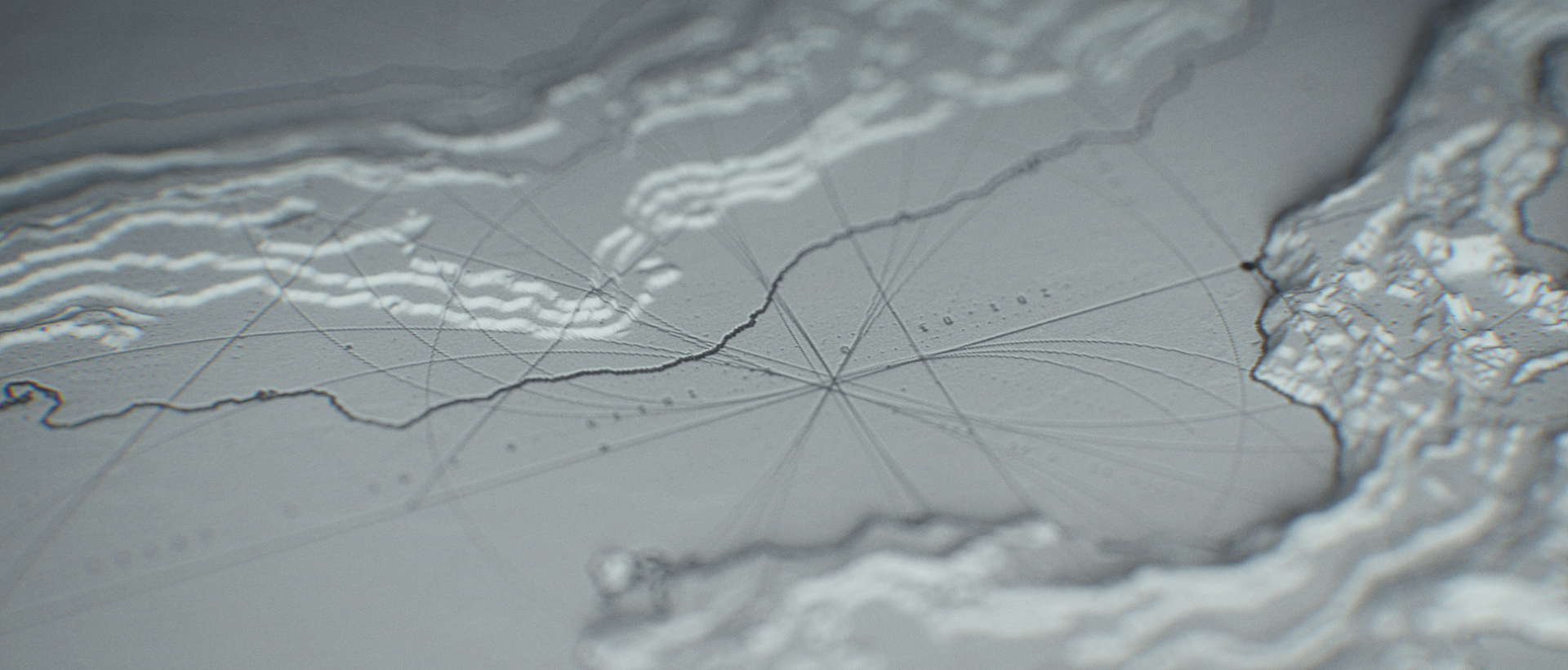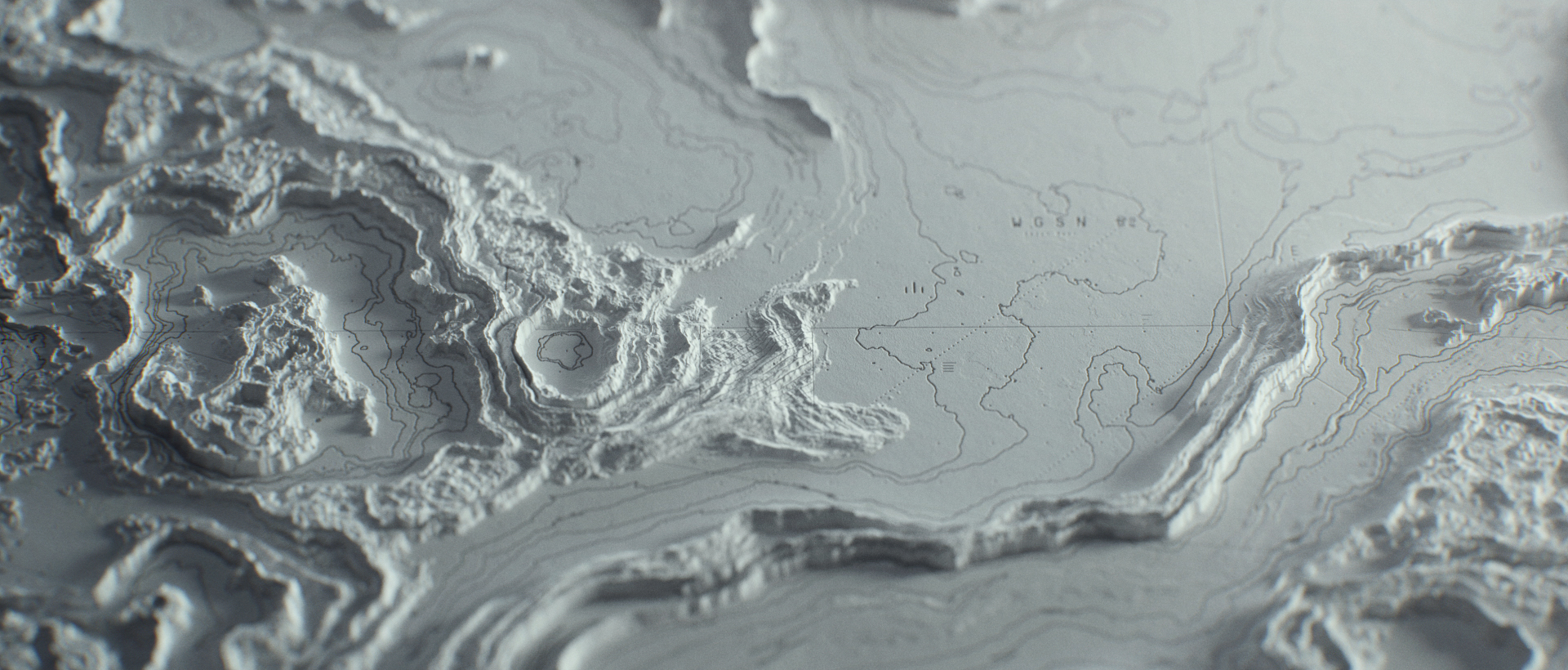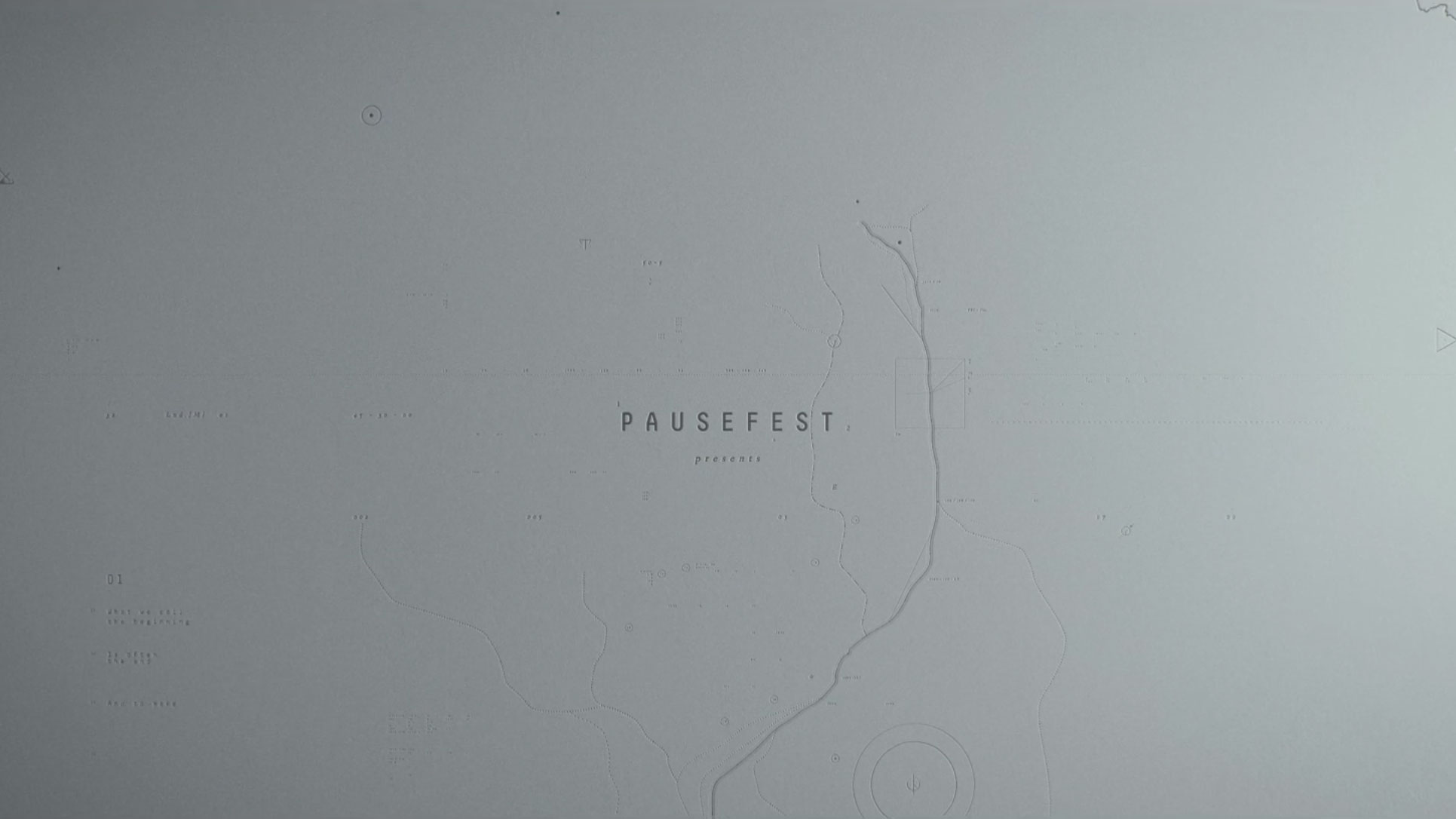Pause Fest 2018’s Opening Titles Take Viewers on a Journey Around the World.
New York City-based art director and designer Toros Kose has always been interested in maps. Captivated by their beauty as a kid, he thinks it was probably all of the intricate details that make up maps that really caught his eye. Though Kose has used maps as imagery in a few projects, he’d never made them a primary visual focus until recently, when he was asked to create the opening titles for Pause Fest 2018, held at Fed Square in Melbourne, Australia.
Pause Fest founder George Hedon was unaware of Kose’s affinity for maps when he contacted him about the project. He just explained that this year’s theme was Journey = Destination and asked that Kose keep that in mind when designing the titles. Using Maxon Cinema 4D and Otoy OctaneRender, Kose spent nearly seven months working on the titles in between other jobs.

I asked Kose to explain his process for creating the distinctive title sequence, which takes viewers on a journey around the world while subtly introducing Pause Fest’s speakers in just two minutes and 27 seconds. Here is what he said.
StudioDaily: How did you come up with the design?
Toros Kose: Other than needing to relate to the theme, the brief was very open. I was really excited to be offered this opportunity and wanted to do something that was good enough for the conference. I had a lot of ideas, and once I decided on what to do, I showed George a PDF presentation that included an explanation of what I wanted to do, reference imagery of different sorts of maps and the work of Japanese artist Noriko Ambe. Her work is just stunning and inspired the look I ended up with for the final piece.

Reference imagery included several cartography examples collected by Kose.

Japanese artist Noriko Ambe’s work helped inspire the look of the Pause Fest titles.
Also, early on I found a little piece of a T. S. Eliot poem [“Little Gidding”] that spoke to me and fit the idea of exploration and journey. I looked it up and thought it would work as a wonderful voiceover for the project. It didn’t end up in the final piece because George already had a copywriter on the project who wrote a custom script. We recorded both scripts and he chose the custom one, which did work out really well.
How would you describe your style, and how did that fit with this piece?
I wouldn’t say that I have my own distinctive style, and that has been okay for me. You can see from the work on my website that I like to get into the details of imagery. I like making futuristic user interfaces and holograms. I’ve used maps a few times, particularly when I worked on the game Destiny: Rise of Iron. In some ways, this project was a culmination of the work that I have done. I just pushed things further than I have before. I wanted to use the skills I have to tell a beautiful, abstract story using simple camera moves, lighting and editing to create a powerful piece.

Kose’s work has often included maps, such as the ones shown here.
What’s your background? How did you get into art directing and design?
I was born and raised in Stockholm, Sweden, to Turkish and Kurdish parents. I drew a fair amount as a kid and I was interested in cameras and computer games. I think going to a Waldorf school from first grade all the way through high school might have made some difference in what I wanted to do because there is such a focus on arts and crafts. In my last couple of years of high school, I got into video editing software and made my own trailers for video games and upcoming movies. It was those little animation tools in video editing software that introduced me to After Effects, and later on I discovered Cinema 4D.

Toros Kose is an art director and designer based in New York City.
I started out studying media technology at Södertörn University, but when I discovered motion graphics I applied to Hyper Island in Stockholm, which is a vocational school focused on digital technology. I got my degree in motion graphics in 2011 and did a four-month internship at Tronic Studio in New York City and then another internship in Hamburg, Germany. I was mostly an animator at that point, but once in a while I did a bit of design work. I learned a lot from tutorials and the C4D community, which really seemed to flourish around 2010.
How did you end up back in New York?
I missed New York, and I had met my then-girlfriend there and I missed her. So I moved back and started working at a place called Superfad, which is closed now. I had already been thinking of freelancing, but that forced me to do it sooner. I’m really fortunate because everything has been going so well. My girlfriend and I got married in 2012. And I’ve been freelancing since 2013, and I’ve worked for a lot of great people and studios, like Blur, Prodigal Pictures/Danny Yount, Gmunk Inc., Imaginary Forces, Trollbäck and Perception. I used to work at home, but now I rent a studio with a small team of other artists I met on a project in 2014. I still do most of my work alone with companies in New York or on the East or West Coast, but sometimes a few of us collaborate on bigger projects.

This macro shot shows the intricate detail of the opening titles’ design.

Yellow accents reflected Pause Fest 2018’s color theme.
Talk about your process for making the titles once you got the green light.
The first thing I did was start playing around with procedural noise textures in Cinema to generate the line work for the maps. By rendering out an image of the noise and treating it a certain way in After Effects, I was able to get it to look like topographical line work and see how that would translate into animation. George liked the look, and it was a simple way to go because I used the same noise texture to generate both the flat line work and the topology. They are a little offset in width, but they follow each other.

Toros used textures and displacement channels to create the map’s elevations.
The 3D topology was rendered out of Cinema, and then I used that sequence of noise as a texture in OctaneRender to create the elevations. It worked, but it was time-consuming because I had to render out large 8K textures. So if I wanted two seconds of noise I had to render out 48 frames of 8K textures and bring that back into Cinema 4D to use in Octane.

Speakers appeared as geographical locations that are discovered on the journey around the map.
Do you see yourself moving more into art direction now?
I do think I want to move more into being an art director, creative director. But I still love being hands on, and I love doing the designs myself and putting together a mood board and presentation deck, not just visual concepts but written concepts. Something that really speaks to me is variation. I love taking on varied projects because that keeps things interesting and challenging.
Credits
Titles: Toros Kose
Music: Kodomo
Voice: Oheri Otobo
Writing: Jaime Sugiyama
Thanks to George Hedon & Oleg Fedotov
Crafts: VFX/Animation
Sections: Creativity
Topics: Project/Case study After Effects cinema 4d Maxon octanerender Toros Kose
Did you enjoy this article? Sign up to receive the StudioDaily Fix eletter containing the latest stories, including news, videos, interviews, reviews and more.










